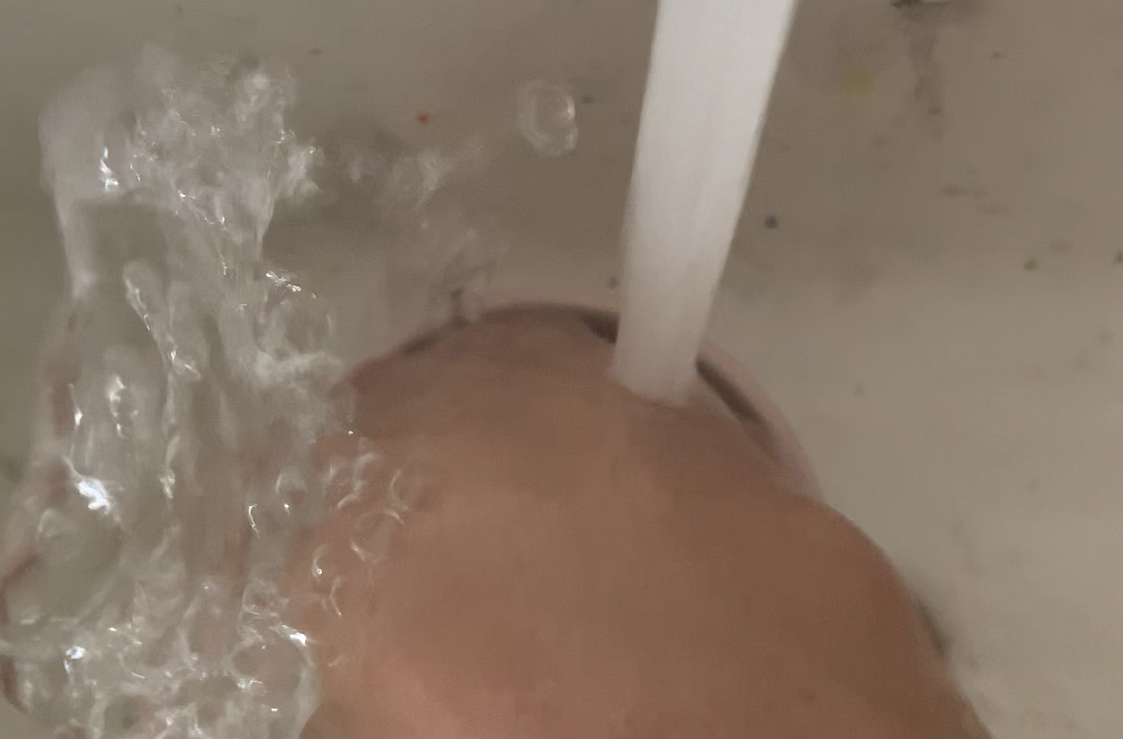Like leaves rustling in the wind, people and their cultural ideologies have a tendency to scatter unpredictably, whether in concentrated piles or as a single leaf tracing an invisible airstream. Growing up in the Caucasus, and then moving to Western Europe and later New York City, Anna K.E. continues to navigate how Eastern childhood influences were reconfigured by her development in the West. Embracing New York City’s palpable impermanence, K.E.’s pieces are equally charged with a feeling of imminent collapse, reordering, and unruly expansion. Blowing From the East Fallen Leaves Gather in the West resembles a site still under construction, with slanted temporary walls acting as blinders that prevent a total consumption of the exhibition from any single viewpoint. The chalk gridded walls are lined with colossal drawings, and an elongated sculptural diorama hangs from the ceiling within the gallery space, continuing into the back office.
Suspended at knee height, the eponymous sculpture Blowing From the East Fallen Leaves Gather in the West, (2021) displays a never ending conglomeration of minimalist architectural models. Running across a metal plateau, the piece is assembled almost entirely out of delicately balanced magnet formations. All of its intersections are held together by magnetic force alone, a force that is invisible to the human eye yet has the capability to interfere with our phones, credit cards, and even the ions within our bodies cells. Symbolically, K.E’s use of magnets are a nod to the invisible forces at work throughout modern society, and point to a city held together with spit. Each tiny magnet acts as a unit of data, and brings to mind coding as an approach to worldbuilding. Evoking an assembly line, visual associations of semi-planned educational institutions melding with vast industrial complexes and bleeding into contemporary art museums seem to propose a city extruding into one eternal horizon. Simultaneously depicting no place and every place, the structure evokes a city sprawl without the interruption of streets, perhaps a rendition of Le Corbusier’s unrealized Ville Radieuse (Fr. the radiant city).
Temporary one-sided walls are built askew to the original shape of the gallery, and the raw physicality of exposed sheetrock and aluminum studs reveals their inherent impermanence. A grid of construction chalk lines is applied by methodically snapping a taut string drenched in graphite against the wall (K.E. uses ChalkRite, a modern adaptation of the ancient Japanese sumitsubo). Tiling has been a recurring thread throughout K.E.'s oeuvre, this being her most symbolic representation of tiles to date. The snapped lines spread graphite inconsistently against the wall leaving behind a blurry residue; the process recalls the quality of drawing itself while evading a level of control inherent to the medium.
At times resembling architectural schematics, K.E’s monolithic works on paper in the exhibition are a recent evolution of her near constant drawing practice over the last two decades. Drawing is a fundamental process for K.E., and strongly influences all facets of her artistic practice. K.E. always finds herself returning to these intuitive drawings, like returning to a bookmark in a half finished book. Reading books in pairs has become a consistent supplement to K.E.'s studio practice, and to hold her place in each, she sandwiches them together. This symbolic melding of words and worlds as depicted by Eastern and Western writers came to feel like a biographical gesture, and influenced K.E. to layer contrasting visual languages together. The drawings, like the diorama and the installation of gridded temporary walls, offer an illusion of expanding beyond the borders of their substrate. Perhaps these pieces are only selected views of much larger blueprints, represented as whirlwinds of shapes, patterns, figures, and objects circling through K.E’s mind and our collective architectures of consciousness.
– Moira Sims



















































































































